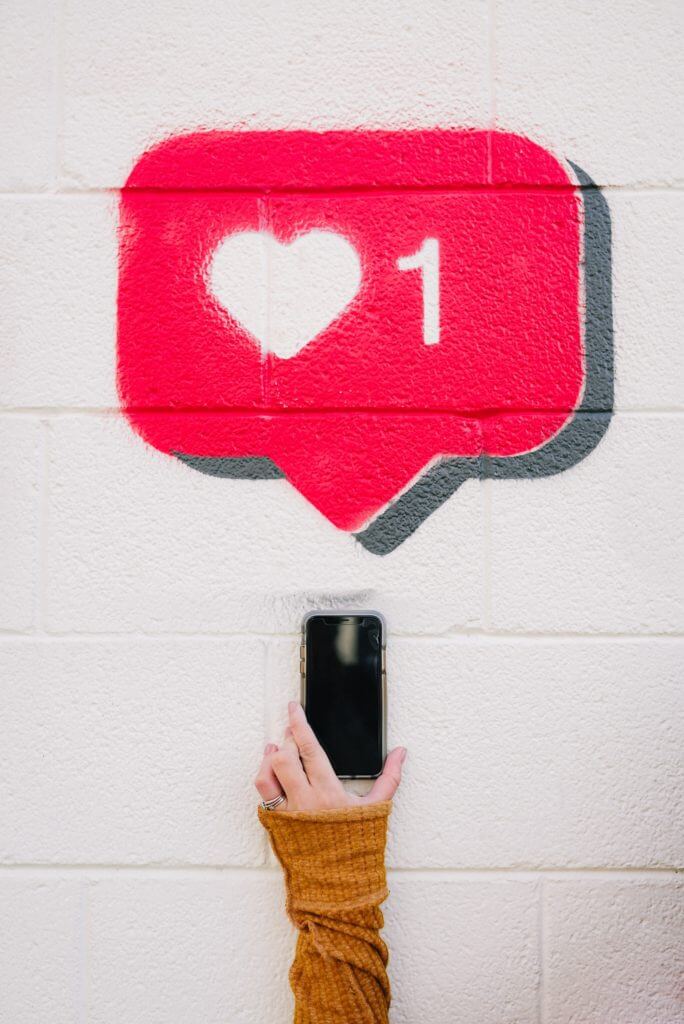Social Media Tips for Dental Practices
In this digital age, social media has become a primary source of information. We use it to discover news, entertainment, shopping, and more. But most importantly for dentists, users look to social media to find local businesses. Your dental social media platforms are the welcome mat for your target audience. A strong social media presence […]

In this digital age, social media has become a primary source of information. We use it to discover news, entertainment, shopping, and more. But most importantly for dentists, users look to social media to find local businesses. Your dental social media platforms are the welcome mat for your target audience. A strong social media presence can help you engage with new patients, increase awareness, and set your brand apart.
Need more dental marketing strategies? Learn how to get more patients in your dental office here.
As a dental marketing agency, we understand the power of social. Are you leveraging it for your practice? Dedicate time to elevating your social media presence by using the guidelines below.

Choose the right dental social media platforms.
Start by identifying your audience and where they live on social media. Different platforms appeal to different demographics. Narrowing down your ideal client demographic will help you tailor communications toward the audience’s specific needs and wants in a dental practice. It will also help you understand which social media platforms your patients are using. (And save you time and effort from using the ones they aren’t.)
Do you offer luxury dental services to a high income demographic? Or, do you serve a large Medicaid patience base including young families? Consider where your patients live, work, and spend their time. Consider which qualities of your dental practice they prefer. Now, consider how that correlates to their social media platform.
Here is a glance at the main demographics for major platforms:
Facebook:
- Largest age group: 25-34 (26.3%)
- Gender: 44% female, 56% male
- Still the most used and engaged platform
- Ideal place to run social media ads, especially to older demographics with more disposable income
Instagram:
- Largest age group: 25-34 (33.1%)
- Gender: 57% female, 43% male
- Second largest platform after Facebook
- Competing with Tiktok and Snapchat for younger users’ attention
Twitter:
- Largest age group: 30-49 (44%)
- Gender: 32% female, 68% male
- Better for sharing content and beginning discussions than advertising.
- 42% of users have college degrees compared to 31% of Americans.
LinkedIn:
- Largest age group: 46-55
- Gender: 51% male, 49% female
- Millennials comprise ¼ of the platform, complementing the traditionally older executive audience.
- Top-rated platform for lead generation
Pinterest:
- Largest age group: 30-49
- Gender: 78% female, 22% male
- Recent increase in Gen Z and millennial users
- Heavily-product focused
TikTok:
- Largest age group: 18-24
- Gender: 59% female, 41% male
- 100+ million monthly active users spending 21.5 hours per month on the platform
- Mostly younger audience, although growing use by adults
Snapchat:
- Largest age group: 13-34 (75%)
- Gender: 58% female, 40% male
- 34% of teens call it their preferred platform
- Highly engaged users who open the app 30 times per day
Youtube:
- Largest age group: 15-25
- Gender: 72% of all female internet users and 72% of all male internet users
- Reflects ongoing shift toward video content
- Opportunity for advertising equivalent to Facebook
Which social platforms are best for you? We recommend starting small. Dedicate your time engaging and posting on the platform(s) best suited to your audience. Once you’ve started growing a dedicated audience there, expand to the others.

How to optimize your dental social media platforms.
Having a great social presence is easier said than done. Let’s start with some basics. It’s important to make your dental social media platforms aesthetically pleasing and functional. Especially now that many users expect brands they engage with be digitally and social media savvy. Social media is a great way to communicate your brand and connect with potential patients. That means having complete profiles that explain who you are and what you do. It means writing thoughtful captions, sharing high quality images, and responding to comments.
Pay attention to these elements of your profile to elevate your presence on each platform:
Profile photo, cover photo, “About” or bio, and action buttons:
Your profile and cover photos are the first thing a potential patient sees. Your profile’s imagery represents your dental practice’s brand and in-person environment. Use your logo as your profile photo and ensure it is properly surrounded by negative space, not cut off, and in high resolution. When applicable, your cover image can be a team photo, brand stock photo, or brand graphic.
Your “About” or bio section should tell a potential patient exactly who you are and what you do in the clearest way possible. It can mimic your website’s tagline or “About” section. On Instagram, you may need to shorten your bio and incorporate an emoji or hashtag.
Perhaps most importantly, make sure to use any available feature to provide a clear call to action. This includes the button on Facebook and the link in bio on Instagram and Twitter. Direct visitors to either contact you or book an appointment, making it as simple as possible for them to come through your doors!
Content and captions:
Of course, many of our clients come to us with a similar question: what should I post? That’s an important thing to figure out. The content you post determines whether new visitors will follow you, current followers will engage with you, and ultimately if people will book appointments. Set a precedent for what type of content you want to post and how often. Is your strategy to use your dental social media platforms to promote your practice? Or, do you want to post about the dental industry to cast a wider net before funneling viewers to your website?
You can do both! Post about your practice one day of the week, a graphic about the dental industry the next day, and an informational video the next. Other unique content ideas include patient testimonials, staff spotlights, holiday posts, and giveaways. Just make sure to keep your content interesting, on-brand, and aligned with your strategy.
As for your captions–put more thought into them than just one sentence and an emoji. Think to yourself, would I find this informative or funny if I read it on someone’s else page? Would I engage with this caption? Don’t be afraid of long captions, especially when they’re chock-full on information. When appropriate, you can also keep captions concise, as long as they are interesting and direct.
Lastly, don’t underestimate the power of an automatic reply. Tweak the settings on your Facebook page to send an automatic thank you with the promise of a follow-up message to everyone who messages you. Your message response rate is displayed on your page and shows how reliable you are with responding on these platforms.
Graphics, photos, and videos:
Social media is a visual tool. To make your platforms feel professional and polished, it’s important to use high quality images. Create branded graphics in Photoshop or Canva. Take photos at your practice. (The phones on our cameras can take incredible photos–and apps like Lightroom can make them even better.) Include staff and patients (with permission, of course) to allow your social media audience to know what it would be like to visit your office. Even better, hire a photographer to take some quality stock photos you can use on your platforms. At the very least, make sure photos are sized correctly, high resolution, focused, and polished.
Videos are powerful social tools as well. On some platforms (TikTok, Facebook, Instagram, Youtube), users are used to engaging videos. Video is an intimidating medium for many business owners. But you should know, videos can range in type and level of polish. You can make professional branded videos, casual “live” videos, fun TikTok videos, and creative Instagram reels. It all depends on your target audience and your brand. Many professional brands use all of the above.
Dental social media works best when you post and engage consistently.
Remember, social media is a conversation, not a megaphone. It’s a place to reach out to your audience and connect–not a place to post content and abandon it there. It doesn’t matter if you have a million followers–if none of them ever talk to you. As the “welcome mat” of your practice, use social media to usher new patients into your dental practice. Tell them who you are, how you can help, what to expect, and what you specialize in. Then, answer their questions, showcase their testimonials, and solve their problems.
“Show up” on your dental social media platforms. Like, comment on, and share other people’s content, and reply to comments and messages you receive. That’s how you grow a more engaged audience.
Lastly, posting once a week may not be enough. (It depends on how rapidly you want to grow your audience.) We suggested posting at least two to three times per week and replying to comments daily. This will boost your engagement and likelihood of appearing in your audience’s feeds.

Work with a Dental Social Media Agency
Social media can be overwhelming. Doing it well requires dedication, time, and resources. If you need help continuing to ramp up your social media, we’re here! As a full-service dental marketing agency, social media is one of the many tools we use to help dental offices bring more patients through their doors.